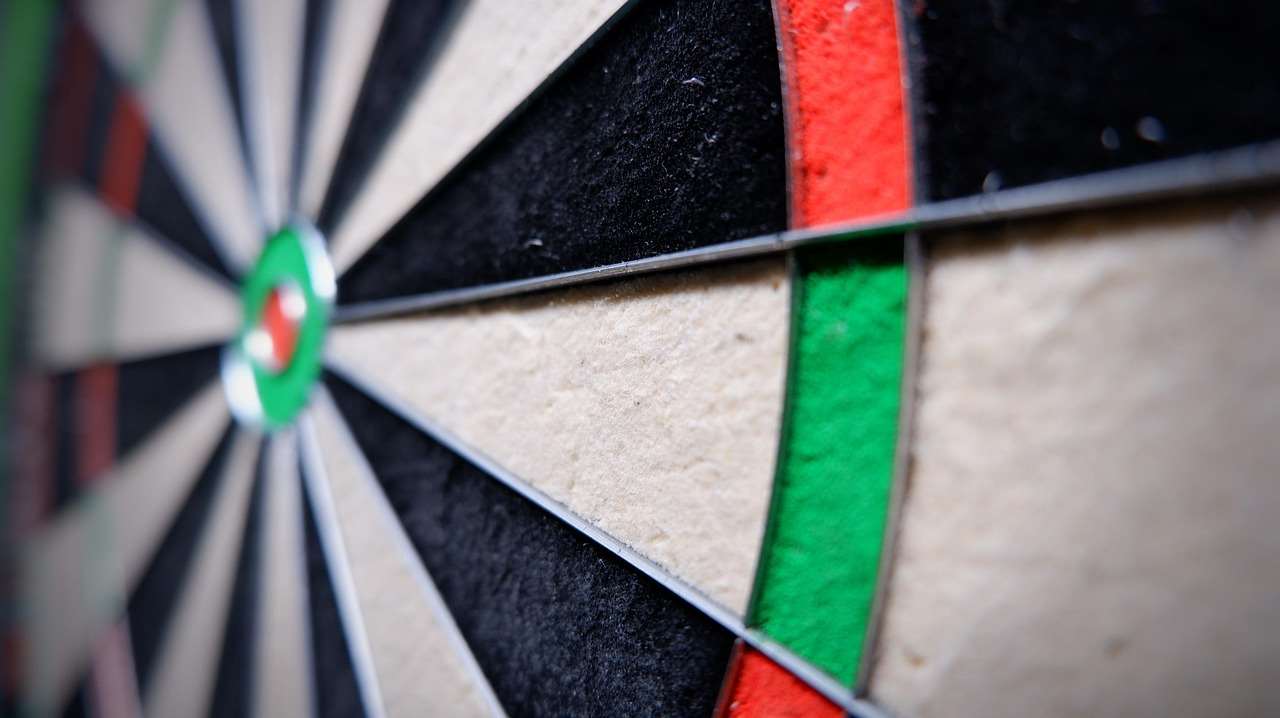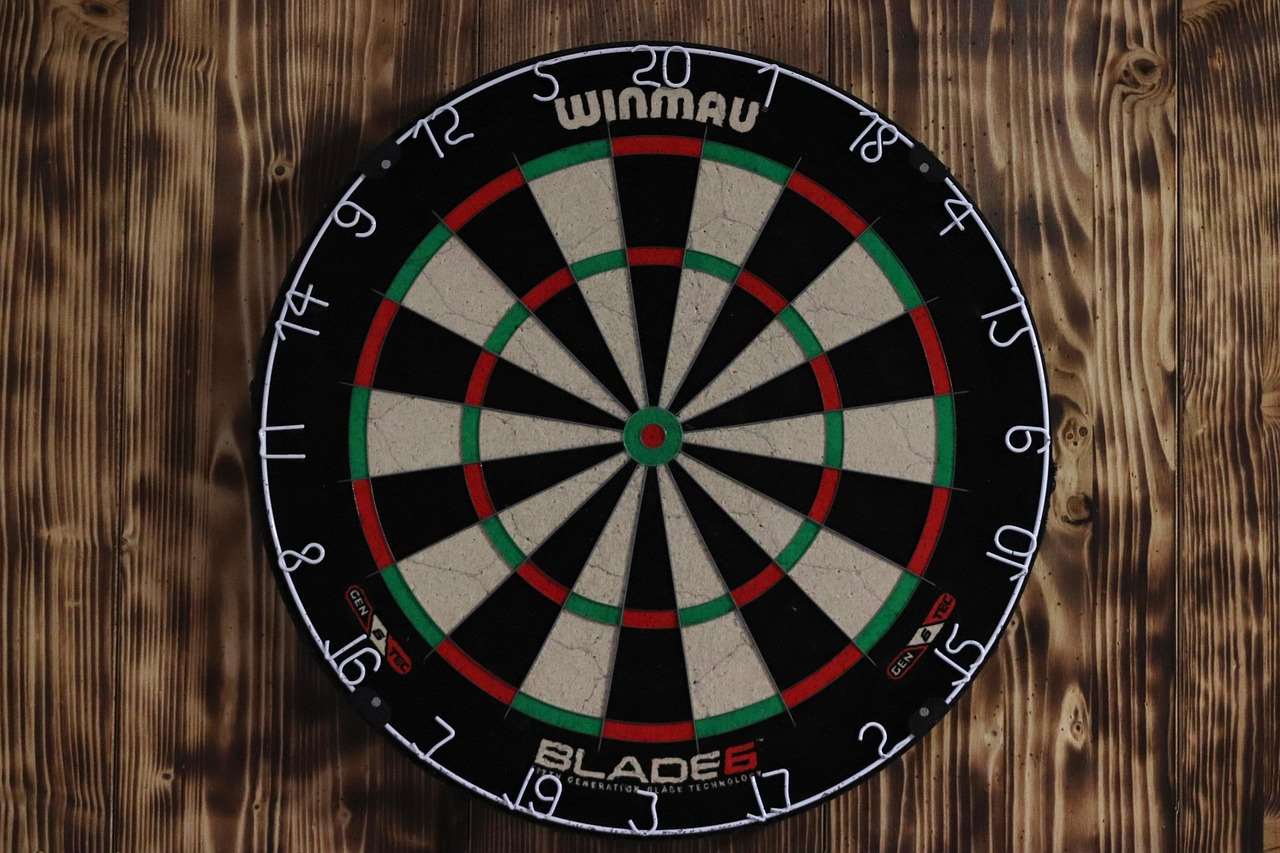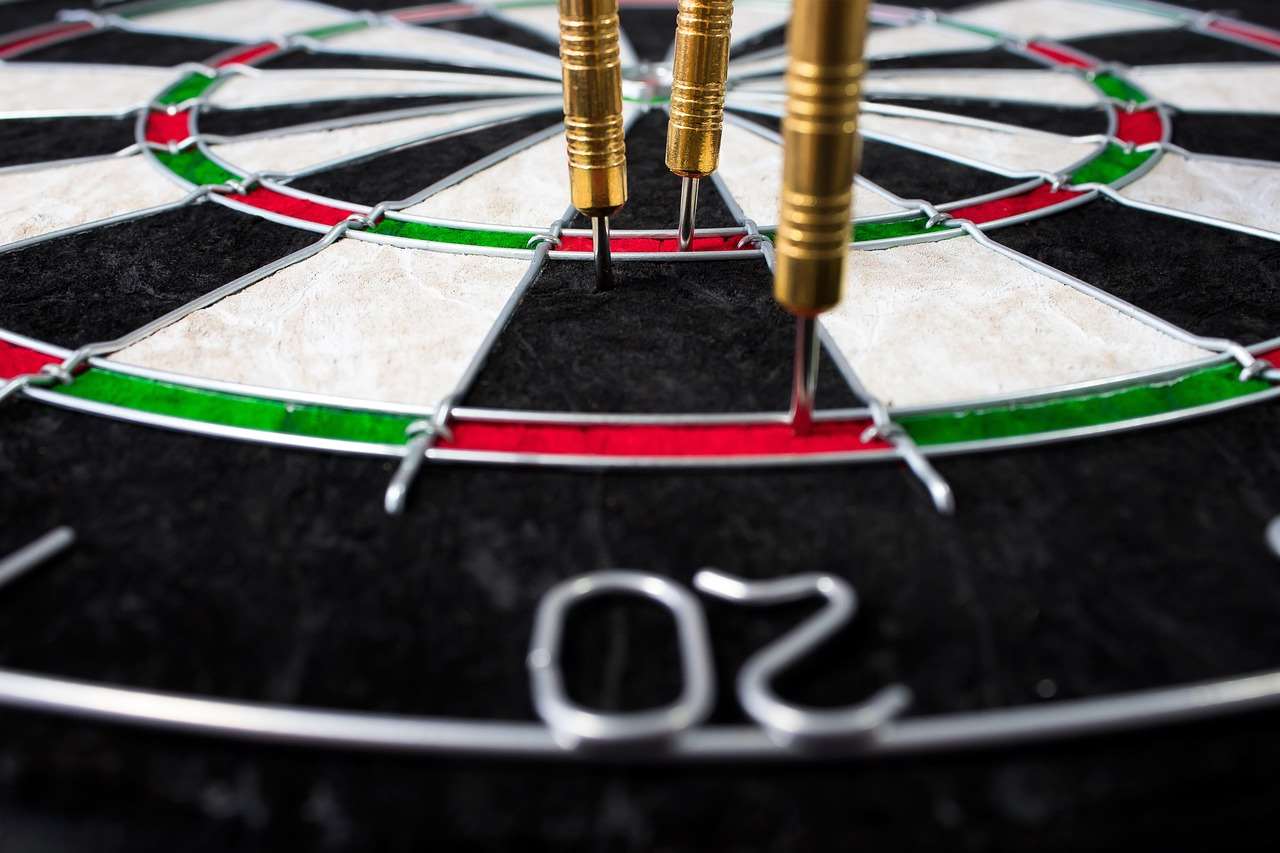Straight darts are often the preferred choice for players seeking consistent and predictable flight paths, improving accuracy and grouping potential. This article will explore everything you need to know about straight barrel darts: from their advantages and disadvantages to choosing the right weight and material for your throwing style, and how they can enhance your game.
⚠️ Still Using Pen & Paper (or a Chalkboard)?! ⚠️
Step into the future! The Dart Counter App handles all the scoring, suggests checkouts, and tracks your stats automatically. It's easier than you think!
Try the Smart Dart Counter App FREE!Ready for an upgrade? Click above!
Understanding the Appeal of Straight Darts
Why do so many dart players, from beginners to seasoned pros, gravitate towards straight darts? The answer lies in their simplicity and the consistent feel they offer. Unlike tapered or bomb-shaped barrels, straight barrel darts provide a uniform grip along the entire length of the barrel. This allows for a more repeatable and controlled release, crucial for consistent accuracy. This even distribution helps players find a comfortable and reliable grip.

One of the major advantages of using straight darts is that they suit a wide variety of gripping styles. Whether you prefer a front, middle, or rear grip, the consistent barrel shape allows you to find a comfortable and balanced hold. This adaptability makes them an excellent choice for players who are still experimenting with their technique or those who like to adjust their grip slightly during a match.
Furthermore, straight darts can promote better grouping. Because of the consistent release and predictable flight path, darts tend to land closer together in the dartboard. This is particularly beneficial when aiming for tight groupings around doubles and trebles. Another aspect to consider is related to Darts worldwide and how certain styles are more popular in some regions.
Straight Darts: Advantages and Disadvantages
While straight darts offer numerous benefits, it’s essential to weigh both the advantages and disadvantages before deciding if they’re the right choice for you.
Advantages
- Consistent Grip: Uniform barrel shape ensures a repeatable grip.
- Balanced Feel: Even weight distribution promotes stability during the throw.
- Versatile: Suitable for various grip styles (front, middle, rear).
- Improved Grouping: Predictable flight path leads to tighter groupings.
- Beginner-Friendly: Simple design makes them easier to learn with.
Disadvantages
- May feel “slippery”: Some players find the lack of a defined grip section challenging.
- Less forgiving of grip variations: While versatile, consistent grip is still key.
- Not ideal for all throwing styles: Players with unconventional throws might prefer a different barrel shape.
Ultimately, the choice of whether or not to use straight darts depends on individual preferences and throwing style. There is no one ‘right’ dart for everyone, so experimenting is important.
Choosing the Right Straight Darts: Weight and Material
Once you’ve decided to try straight darts, the next step is to choose the right weight and material. These factors significantly impact the dart’s feel and performance.
Dart Weight
Dart weight is a crucial factor that affects both the feel and the trajectory of your throws. Straight darts are commonly available in weights ranging from 20 grams to 26 grams. A lighter dart (20-23 grams) requires more effort to control but can be beneficial for players with a quicker, more wrist-driven throwing style. A heavier dart (24-26 grams) offers more stability and momentum, making it a good choice for players with a smoother, more deliberate throw.
Finding the right weight is a process of trial and error. It’s recommended to try out different weights to see which one feels most comfortable and allows for the most consistent accuracy. Don’t hesitate to try your hand on the best that 180 darts best have to offer.
Dart Material
The most common materials used for straight darts are tungsten and brass. Brass darts are more affordable but tend to be bulkier and less durable. Tungsten darts, on the other hand, are denser and more expensive, allowing for a slimmer barrel profile that promotes tighter groupings. They are also more resistant to wear and tear, making them a worthwhile investment for serious players.
Tungsten is typically mixed with nickel to achieve the desired hardness and machinability. The percentage of tungsten in the alloy affects the dart’s density and price. Higher tungsten content (90% or more) results in a slimmer and more expensive dart. For beginners, 80% tungsten straight darts offer a good balance of performance and affordability.

Grip and Technique with Straight Barrel Darts
Mastering the grip and throwing technique is essential to maximizing the benefits of straight darts. A consistent grip is crucial for achieving a repeatable release and accurate throws.
Finding Your Grip
As mentioned earlier, straight darts are suitable for various grip styles. Experiment with different grip positions (front, middle, rear) to find what feels most comfortable and natural. The key is to maintain a consistent grip each time you throw. Consider the following tips:
- Pressure: Avoid gripping the dart too tightly. A relaxed grip allows for a smoother release.
- Finger Placement: Experiment with different finger placements to find the most stable and controlled hold.
- Consistency: Once you find a comfortable grip, stick with it. Avoid making frequent adjustments, as this can negatively impact your accuracy.
Throwing Technique
A smooth and consistent throwing motion is just as important as the grip. The following principles apply whether using straight darts or another barrel type:
- Stance: Maintain a stable and balanced stance. Most players prefer a slightly angled stance with one foot forward.
- Arm Motion: Use a smooth and controlled arm motion. Avoid jerky or erratic movements.
- Follow-Through: Follow through with your arm after releasing the dart. This helps maintain accuracy and consistency.
- Focus: Focus on your target and visualize the dart hitting the desired spot.
Practice regularly to refine your grip and throwing technique. The more you practice, the more consistent and accurate you will become. Don’t forget to keep track of your scores, for which you can use a Darts scoreboard app.

Accessorizing Your Straight Darts
The performance of your straight darts can be further enhanced by selecting the right accessories, including shafts and flights. Experimenting with different combinations can help you fine-tune the dart’s flight characteristics and achieve optimal performance.
Shafts
Shafts, also known as stems, connect the dart barrel to the flight. They are available in various lengths and materials, including aluminum, nylon, and carbon fiber. Shorter shafts tend to make the dart fly straighter, while longer shafts can provide more stability.
Nylon shafts are a popular choice for beginners due to their affordability and durability. Aluminum shafts offer increased stiffness and can improve accuracy, while carbon fiber shafts are lightweight and strong, offering excellent performance.
Flights
Flights are the wings of the dart, providing stability and lift during flight. They are available in various shapes, sizes, and materials. Standard flights are the most common type and offer a good balance of stability and lift. Slim flights are smaller and more aerodynamic, allowing for tighter groupings. Kite flights are larger and provide more lift, making them suitable for players with a slower throwing style.
The material of the flight also affects its durability and performance. Polyester flights are affordable and durable, while nylon flights are more flexible and offer better grip. Choosing the right flights involves finding the right balance between size, shape, and material for your individual throwing style.
Advanced Techniques for Straight Darts
Once you’ve mastered the basics of grip and technique, you can start exploring advanced techniques to further improve your accuracy and consistency with straight darts. These techniques involve fine-tuning your stance, aiming, and mental game.
Stance Adjustments
Experiment with slight adjustments to your stance to find the optimal position for your body and throwing arm. Some players prefer a more open stance, while others prefer a more closed stance. The key is to find a stance that feels comfortable and allows for a smooth and balanced throwing motion. Also, one crucial aspect is proper dartboard rotation.
Aiming Techniques
Develop a consistent aiming routine to ensure that you are always targeting the desired spot on the dartboard. This routine should include visualizing the flight path of the dart and focusing on the target. Some players find it helpful to use a specific reference point on the dartboard to aid in aiming.

Mental Game
The mental aspect of darts is just as important as the physical aspect. Developing a strong mental game can help you stay focused and confident under pressure. This involves practicing visualization, positive self-talk, and stress management techniques. Learning how to maintain composure after a missed shot or during a close match is crucial for success.
Consider also keeping abreast of all current events via nos darts.
Maintaining Your Straight Darts
Proper maintenance is essential to prolong the lifespan and maintain the performance of your straight darts. Regularly cleaning and inspecting your darts can prevent damage and ensure consistent performance.
Cleaning
Clean your darts regularly to remove dirt, oil, and debris that can accumulate on the barrel and flights. Use a soft cloth or brush to gently clean the darts. For stubborn dirt, you can use a mild soap and water solution. Be sure to dry the darts thoroughly after cleaning to prevent corrosion.
Inspection
Inspect your darts regularly for any signs of damage, such as bent shafts, cracked flights, or chipped points. Replace any damaged parts immediately to prevent further damage and maintain consistent performance. Tighten loose shafts and flights to ensure they are securely attached to the barrel.

Storage
Store your darts in a protective case to prevent damage when not in use. A good dart case will protect the darts from impacts, scratches, and other forms of damage. Consider investing in a case with individual slots for each dart to prevent them from rubbing against each other.
Conclusion
Straight darts are a versatile and popular choice for dart players of all skill levels. Their consistent grip, balanced feel, and predictable flight path make them an excellent option for those seeking improved accuracy and grouping. By understanding the advantages and disadvantages of straight darts, choosing the right weight and material, and mastering the grip and throwing technique, you can unlock their full potential and elevate your dart game. Don’t be afraid to experiment with different accessories and advanced techniques to fine-tune your performance. Remember, consistent practice and proper maintenance are key to maximizing the benefits of straight darts and achieving success on the dartboard. Now, go out there and start throwing!
Hi, I’m Dieter, and I created Dartcounter (Dartcounterapp.com). My motivation wasn’t being a darts expert – quite the opposite! When I first started playing, I loved the game but found keeping accurate scores and tracking stats difficult and distracting.
I figured I couldn’t be the only one struggling with this. So, I decided to build a solution: an easy-to-use application that everyone, no matter their experience level, could use to manage scoring effortlessly.
My goal for Dartcounter was simple: let the app handle the numbers – the scoring, the averages, the stats, even checkout suggestions – so players could focus purely on their throw and enjoying the game. It began as a way to solve my own beginner’s problem, and I’m thrilled it has grown into a helpful tool for the wider darts community.